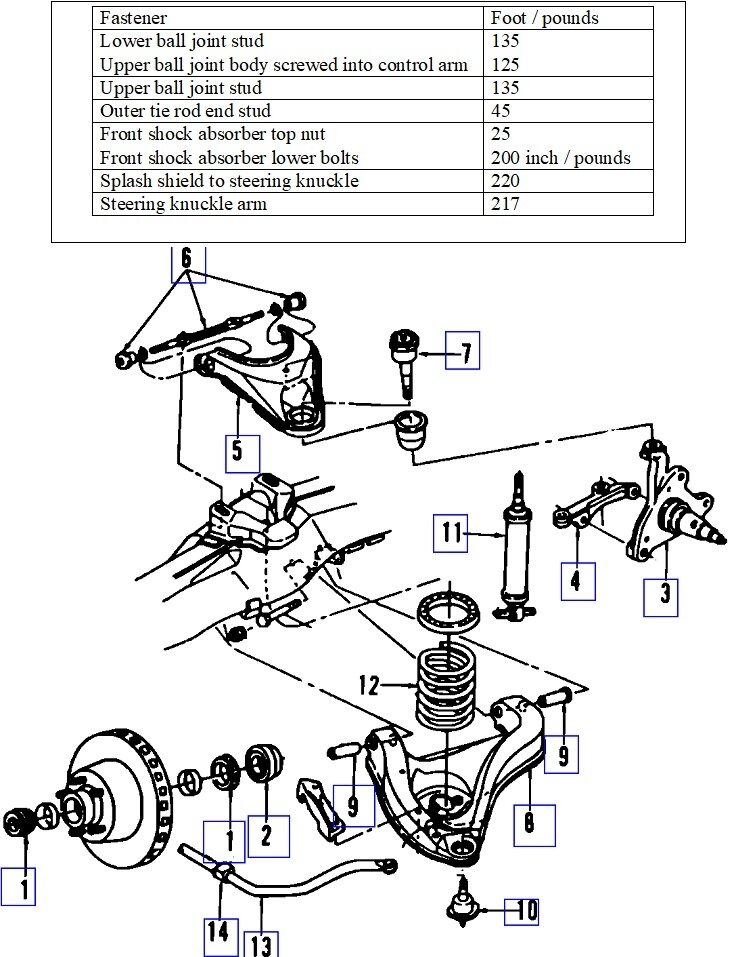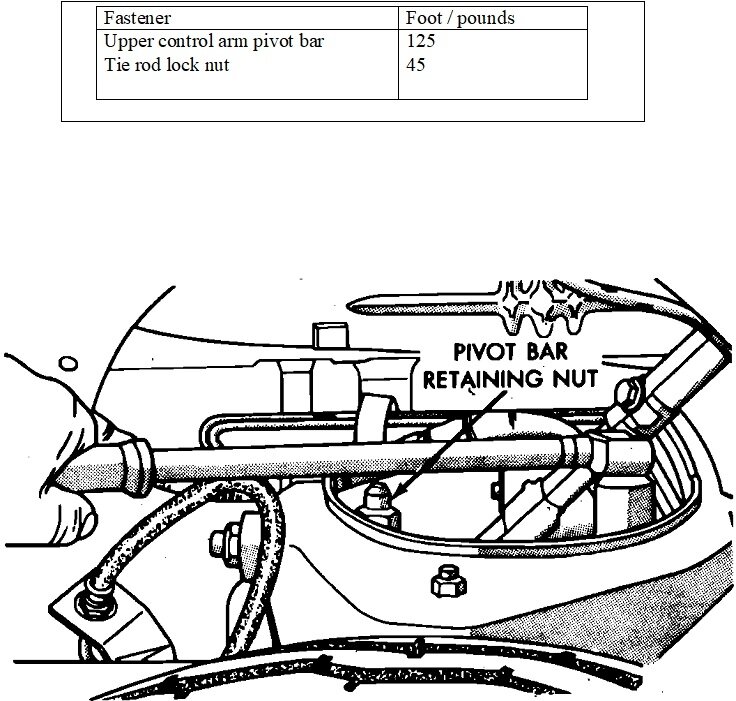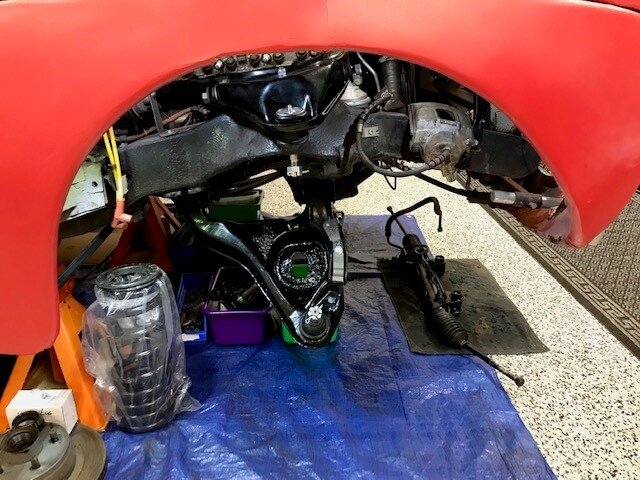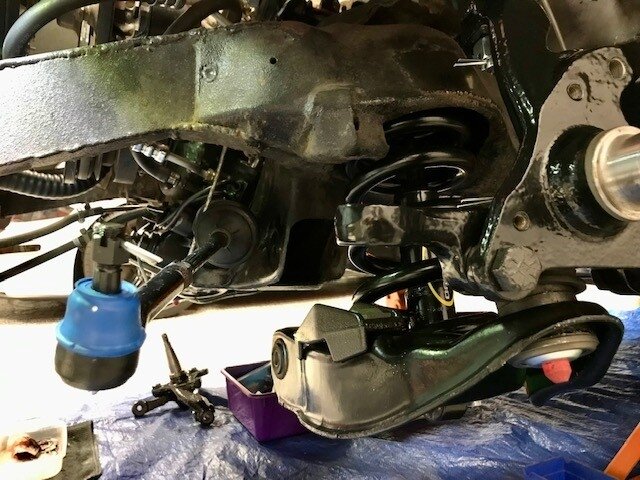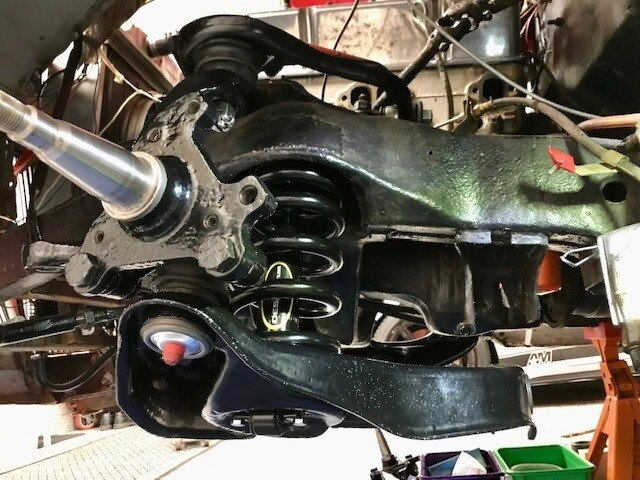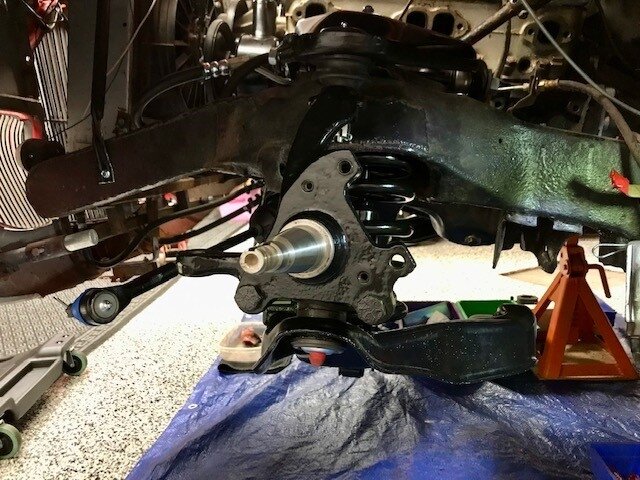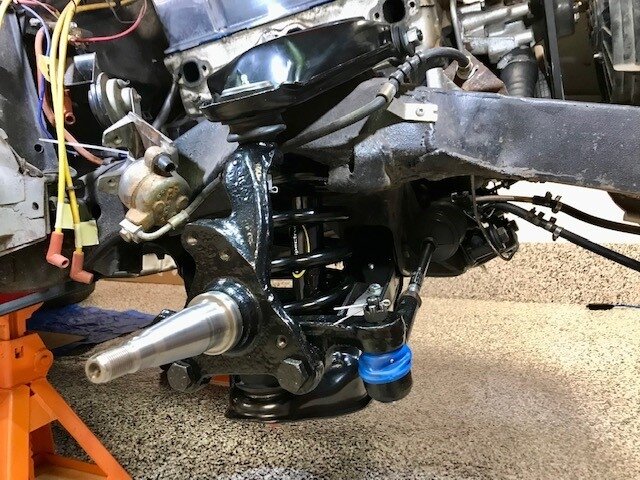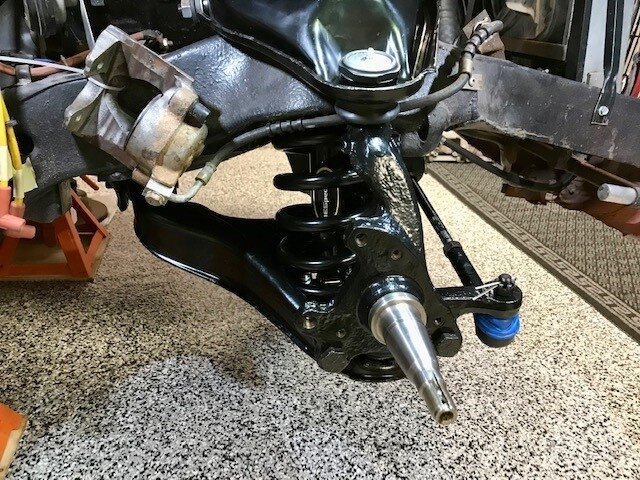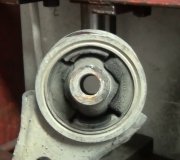Dandy. Those slotted holes for the upper control arm's bolts are alignment adjustments. I strongly recommend you use no grease or any type of lubricant on those slides. If those two bolts don't clamp hard enough, the alignment can shift when you hit bumps in the road. Your alignment specialist will tighten those bolts when he's done with those adjustments.
Both of those corners of the upper control arm are pushed in or pulled out to adjust "camber". That's the inward or outward tilt of the wheel, as viewed from in front of the truck. One is pulled out and the other is pushed in to adjust "caster". That moves the upper ball joint forward or rearward relative to the lower ball joint.
99% of vehicles call for slightly positive camber, meaning the wheel is tipped out on top. That results in best tire wear and it places the truck's weight right over the larger "load-carrying" wheel bearing. The job of the smaller wheel bearing is just to hold the wheel straight. Tires want to roll in the direction they're leaning, so besides being in specs, both must be very close to equal, so their pulls will offset each other, then the left one should be just a little higher positive to offset "road crown". That's the slant of the road surface to the right so water runs off.
Caster is responsible for how quickly the steering wheel returns to center on its own after you turn a corner. It is also responsible for reducing steering wander. Caster increases as the upper ball joint is moved further rearward. `Positive caster is when the upper ball joint is further back than the lower one. The higher caster is, the harder that wheel wants to turn toward the center of the truck. That can be hard enough that you can't pull that wheel back by hand. The other wheel also wants to turn in when vehicle weight is placed on it. It's when the steering linkage connects the two wheels together that the two forces offset each other. It is important that caster is also equal on both sides so their pulls offset each other. It can also be used to offset road crown.
It's very easy to adjust camber to specs on the first wheel, and take what you get for caster when it is "close enough". Camber is a major tire wear angle. Caster has no effect on tire wear for all practical purposes, but I have to add a comment here for the benefit of others preparing to take the Suspension and Alignment certification test. In their opinion, caster IS a tire wear angle. The problem is caster wear only takes place when you're turning a corner. That applies to city driving and when in a parking lot. In reality, no tire will ever wear out or have excessive wear due to misadjusted caster.
Adjusting the second wheel is trickier. Camber still has to be set to specs, but it takes considerable jockeying back and forth to match caster on both sides. This is where the most time is spent getting everything right.
Due to the geometric relationship of the steering and suspension parts, readjusting caster and camber causes a change in "toe". That's the direction the wheels are steering. Readjusting toe has no noticeable effect on camber and caster measurements, so toe is always the last thing to be adjusted during the alignment. "Total toe", the sum of toe on the two wheels, is also a major tire wear angle.
For a couple of months in the mid '90s, every full-size Dodge van came off the assembly line with front coil springs one spring rate too light. I was involved in a recall where those springs had to be replaced with the correct ones. To add to the misery, I had to do them on a drive-on alignment hoist. Thanks to previous experience, I was able to do the pair in about 20 minutes. The secret is to leave the lower ball joint connected, and if you have a helper, you don't even have to remove the wheel and tire.
Raise the truck up and support it on jack stands or hoist arms under the frame so the suspension hangs down freely. If you're doing this on your garage floor, place a floor jack under the inner edge of the lower control arm, between the two pivot bolts. Remove those two pivot bolts, then let the jack down. All pressure will be off the spring once the arm comes down about four inches. Have your helper pull out on the bottom of the tire, or, if you have the wheel off already, just pull the lower arm down and lift the spring out.
If you're not doing other work, as you did, on the arm, clean out any dirt or pebbles from the pocket the spring sits in. Those pebbles can cause a temporary crunching noise, and they will scrub off the protective coating on the new spring. The lower end of the spring must be indexed to sit squarely in the matching pocket in the arm. Don't worry about where the upper end of the coil ends up. It's flat and will sit just fine on its mounting surface. Often there's a rubber isolator on top of the spring. Use string or speaker wire to tie it to the spring so it doesn't fall off during spring installation. This job is easier if the anti-sway bar link is removed.
Now raise the jack to push the arm back up. You'll need a pry bar to shift it around so the bushings slide into place. Once one bushing gets close, you'll be very lucky if you can slide the pivot bolt in. Instead, use a tapered bar or "line-up" tool, or even a large screwdriver through the holes to hold that bushing in place. Now work the second bushing into place. When both are close, you'll find it rather easy to fine tune one bushing so the bolt can be inserted. At that point the arm is captive and can't squirt out. Work the second pivot bolt in. When both springs are done, set the truck down on the tires, bounce it a few times or drive it around the parking lot to settle the suspension, then crawl underneath to tighten the pivot bolts while the truck is sitting at normal ride height.
Let me know how that works for you.
Monday, January 30th, 2023 AT 11:11 AM
